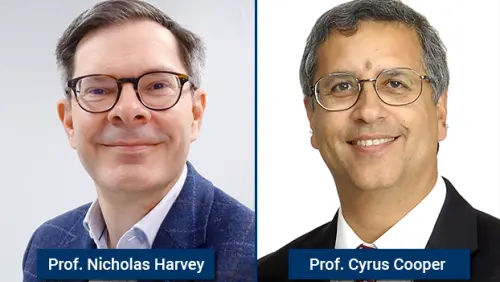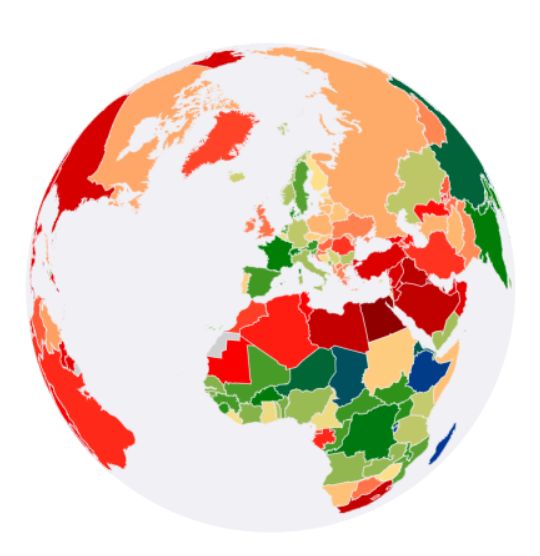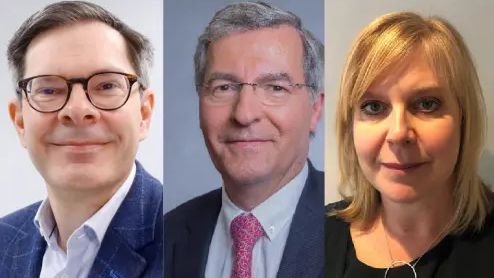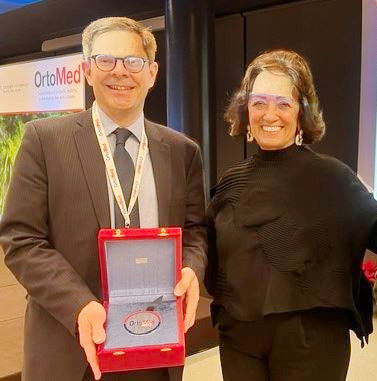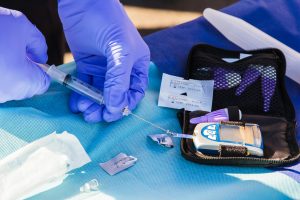[vc_row][vc_column][vc_single_image image=”4783″ img_size=”medium” alignment=”center” style=”vc_box_shadow_3d”][vc_column_text]By Prof Richard Oreffo
October 20th is World Osteoporosis Day – an opportunity to raise global awareness of the prevention, diagnosis and treatment of osteoporosis.
We live in exciting and yet challenging times. Life expectancy for men and women will see many reach their eighth and ninth decades. Indeed, my daughters, born at the turn of the Century can expect to reach their ninth decade. And yet, with this wonderful increase in life expectancy, tremendous developments in healthcare, we are facing a public health crisis – Osteoporosis- the silent epidemic.
Reflect on this – when did you last consider your “bone health” – thought so!
Yet, our bones, which are vital for life, receive scant attention. Our bones may be hidden, but they provide you with support, protection for your internal organs and they enable movement. Our bones enable us to be active and independent in old age. Like many things in life, we take our bone health for granted. Perhaps because, osteoporosis, the most common bone related diseases, can progress without any symptoms until you unfortunately suffer a fracture – a “silent disease”. An osteoporotic fracture in your spine (a vertebral fracture) can result in back pain, loss of height, deformity, immobility and of course reduce quality of life. And yet, only around one-third of vertebral fractures reach clinical attention and under diagnosis is a worldwide problem. This lack of awareness in an increasing ageing population, and that is all of us, is developing into a global health crisis.
So perhaps the questions should be what do you know about bone health? Why does this matter? What is Osteoporosis?
In less time than it took to read that last sentence a fracture has occurred worldwide or put simply, it is estimated an osteoporotic fracture occurs every 3 seconds. To bring this home for us all, that means, worldwide, 1 in 3 women over the of age 50 will experience an osteoporotic fracture (in fact in the UK it is now 1 in 2 women). And of course, it is not only women, men suffer from osteoporosis – 1 in 5 men aged over 50 can expect to experience an osteoporotic fracture. These osteoporotic fractures typically occur at the hip, spine and wrist and, as you will have gathered, your chances of an osteoporotic fracture increase with age. Two more thoughts for you to consider: i) in women over 45 years of age, osteoporosis accounts for more days spent in hospital than a raft of other diseases such as diabetes, heart attack and breast cancer, and, ii) your risk of a second osteoporotic fracture doubles after a first fracture.
[/vc_column_text][vc_single_image image=”4782″ img_size=”full” alignment=”center” style=”vc_box_shadow_3d”][vc_column_text]What then is osteoporosis? Osteoporosis means literally porous bones, a disease in which the density and quality of our bones are reduced. It is this increase in porosity and fragility that leads to an increase in your risk of bone fracture. Think of it like a matchstick- as you pare away the sides of a matchstick, its ability to snap increases. The problem is that our loss of bone with age occurs gradually, with no symptoms until, typically, that first fracture.
The good news (yes, there is much good news!) osteoporosis can be detected early and it can be treated. So what can you do? – Well in the first instance, you could take the IOF (International Osteoporosis Foundation) One-minute osteoporosis risk test – https://www.iofbonehealth.org/iof-one-minute-osteoporosis-risk-test.
This simple online test can help identify your risk factors. We know many of the risk factors for osteoporosis. Smoking, alcohol, lack of exercise, poor nutrition and a family history of osteoporosis. On identifying your risk factors, there are things you can do to counter your risk of an osteoporotic fracture. We can increase our daily level of physical activity to more than 30 minutes per day – never has the old saying “use it or lose it” been more applicable to our bones, as a lack of exercise results in bone (and muscle) loss. Regular weight-bearing exercise can help you build and strengthen your bones and muscles. A healthy life style can improve bone health. Do you drink within safe drinking limits? (alcohol can affect your bone health, lead to falls which of course increases your risk of an osteoporotic fracture)
Do you smoke? (smoking doubles your risk of osteoporosis); an appropriate diet incorporating vitamin D and calcium (often reduced with poor nutrition) are essential for strong and healthy bones – so get outside more to boost your vitamin D to develop strong bones!
For those with osteoporosis, we have an arsenal of therapeutic options – your bones are constantly remodelled throughout life with cells that make bone and cells that resorb bone. We know that in osteoporosis, there is greater bone resorption (loss) than bone formation. We can use agents to stop bone loss (anti-resorptive) or agents to build bone (anabolic agents). Thus, anti-resorptive agents (such as estrogen, selective estrogen receptor modulators, Denosumab and bisphosphonates), reduce bone resorption and maintain your bone mineral density. Anabolic agents (parathyroid hormone (PTH1-84), teriparatide (PTH1-34) stimulate bone formation and thus increase your bone mineral density and agents such as Strontium ranelate that affect bone formation and resorption to reduce fracture risk. However, we still need better treatment and bone formation approaches and increased awareness.
Here in Southampton we have unique clinical and basic science programmes that seek to play our part to address this global crisis -The world leading MRC Lifecourse Epidemiology Unit, directed by Professor Cyrus Cooper and President of the IOF, continues to transform and inform our understanding of nutrition, genetics and the epidemiology of osteoporosis and to inform guidelines on bone health. Here in the IDS, I lead the Bone and Joint Research Group, a multidisciplinary research group, focused on developing strategies to repair bone & cartilage and understanding bone development with a focus on translation from bench to clinic. In particular, the application of bone stem cells and regenerative medicine strategies. In 2014, we conducted the first 3D titanium-bone stem cell impaction bone graft. There is still much to do to break this “silent disease” but we have a good understanding of the disease process and strategies to develop new treatments.
So, on October 20th, World Osteoporosis Day, consider your bone health and don’t let this silent epidemic break you, or any member of your family.[/vc_column_text][/vc_column][/vc_row]


